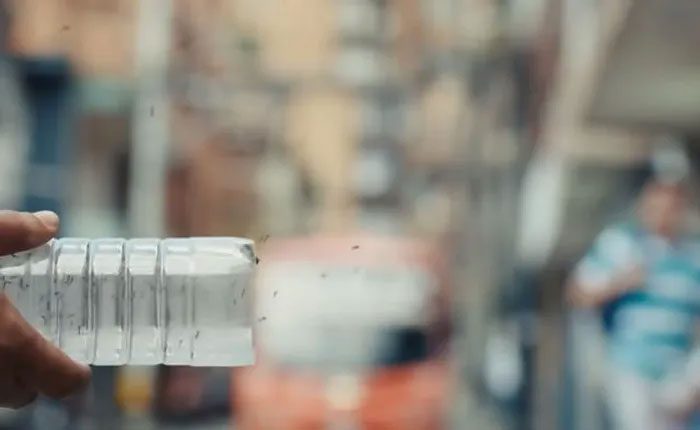At this “factory,” mosquitoes are raised, fed, and kept in ideal conditions for their growth and reproduction.
Inside a two-story building in Medellín, Colombia, a team of scientists is diligently working in a humid laboratory that produces millions of mosquitoes. They “raise” them by creating an environment with suitable temperatures and feeding them everything from sugar to blood.
Afterward, they release these mosquitoes throughout Colombia to breed with wild mosquitoes – species that can carry the dengue virus along with various other viruses that can harm the local population.
This is not a horror story but a reality. The released mosquitoes are not intended to harm local residents; on the contrary, they help millions of people escape from diseases caused by wild mosquitoes.
The mosquitoes “produced” from the “factory” in Medellín carry a bacterium called Wolbachia, which prevents them from transmitting dengue fever and other viruses such as Zika and the yellow fever virus to humans. By releasing them and allowing them to breed with wild mosquitoes, Wolbachia bacteria will proliferate, protecting millions from illness.

A mosquito breeding cage in the laboratory in Medellín. (Photo: Internet).
Recently, billionaire Bill Gates wrote about this special “factory” on his “GatesNotes” website. According to him, an experiment in Yogyakarta, Indonesia, last year showed that mosquitoes carrying Wolbachia reduced dengue cases by 77% in the city and 86% of dengue hospitalizations. In a new study in Medellín, dengue cases have decreased by 89% since Wolbachia mosquitoes began to be released in 2015.
These results represent a significant breakthrough, providing evidence that this new technology can protect countries from the threat of mosquito-borne infectious diseases. The World Mosquito Program is currently releasing Wolbachia-carrying mosquitoes in 11 countries: Brazil, Colombia, Mexico, Indonesia, Sri Lanka, Vietnam, Australia, Fiji, Kiribati, New Caledonia, and Vanuatu.
What is remarkable about Wolbachia mosquitoes is that when they are released in sufficient numbers to protect humans from disease, they will become a self-sustaining solution. Over time, people will not have to worry about mosquito-borne diseases, and the funds and healthcare facilities treating these diseases will also be freed up.
According to Gates, in the context of climate change, the mission of the World Mosquito Program is deemed urgent. As global temperatures rise, disease-carrying mosquito species will have more environments to thrive and reproduce, increasing the spread of diseases. The greatest risk is dengue fever, which infects over 400 million people and claims the lives of 20,000 each year.
Therefore, the demand for Wolbachia mosquitoes will continue to rise, meaning the World Mosquito Program needs to produce hundreds of millions of them. The “factory” in Medellín is currently the largest mosquito breeding facility in the world, producing over 30 million mosquitoes each week.

Wolbachia mosquitoes released into the wild. (Photo: Internet).
Until now, exterminating or repelling mosquitoes with insecticides, nets, and traps has been prioritized over mass “production” of mosquitoes. Killing mosquitoes is challenging, and raising millions of them is even harder. Mosquitoes must be nurtured, fed, and kept in ideal conditions for them to grow and reproduce. The facility in Medellín has been refining its processes and enhancing efficiency to breed and release Wolbachia mosquitoes on a large scale.
Once millions of eggs and adult mosquitoes are successfully bred, the facility will release them into the wild. The World Mosquito research team is also experimenting with releasing them from drones. Gates expressed hope that the World Mosquito Program continues to grow to protect and save more lives around the world.


















































